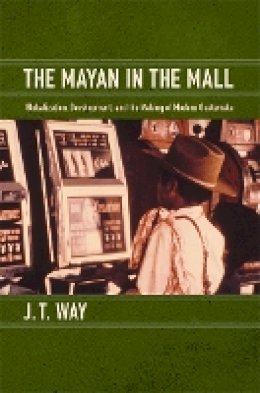
The Mayan in the Mall: Globalization, Development, and the Making of Modern Guatemala
J. T. Way
Using a wide array of historical and contemporary sources, Way explores the multiple intersections of development and individual life, focusing on the construction of social space through successive waves of land reform, urban planning, and economic policy. His explorations move from Guatemala City's poorest neighborhoods and informal economies (run predominantly by women) to a countryside still recovering from civil war and anti-Mayan genocide, and they encompass such artifacts of development as the modernist Pan-American Highway and the postmodern Grand Tikal Futura, a Mayan-themed shopping mall ringed by gated communities and shantytowns. Capitalist development, Way concludes, has dramatically reshaped the country's physical and social landscapes—engendering poverty, ethnic regionalism, and genocidal violence—and positioned Guatemala as a harbinger of globalization's future.
Product Details
About J. T. Way
Reviews for The Mayan in the Mall: Globalization, Development, and the Making of Modern Guatemala
J. M. Rosenthal
Choice
“The shift away from the highlands indigenous communities that have generally attracted North American scholarly attention opens a novel perspective on the making of what Way calls the ‘manmade ruin’ of Guatemala’s contemporary social and physical landscape.”
Carlota McAllister
American Historical Review
“Both scholarly and highly personal, J. T. Way’s book is too rich in original insights, skillfully developed examples, and provocative arguments to do it full justice in so short a space. It is enough to state that it should be required reading for anyone interested in Guatemala’s recent history. Also, it is highly recommended to all students of development and modernization in general.”
Stephen Webre
Hispanic American Historical Review
“…[A] fascinating narrative that complicates both sequence and chronology by weaving the hitherto hidden logic of everyday survival and resistance with the ‘rational’ logic of a demythologized and demystified ‘modernity.’”
Susan A. Berger
Journal of Interdisciplinary History
“The Mayan in the Mall is a complex and admirable work that explores how the violent world inhabited by Guatemala's poor majority came into being…. Way's combination of empathy and hard-bitten realism gives an incomparable view of how people live their lives when choices are few and opportunity is infinitesimal.”
Cyrus Veeser
Business History Review
“The strength of The Mayan in the Mall resonates from the author's use of personal stories to illustrate broader themes, his attention to metaphor, and his dialectical contemplation…. [T]his book will certainly appeal to scholars of Guatemala as the first English-language history of its capital city in addition to general readers of urban studies.”
Michael D. Kirkpatrick
Canadian Journal of History
“I suggest that The Mayan in the Mall should be placed at the top of the reading list of all visitors to Guatemala—professionals and, in particular, us 'Maya specialists' and tourists alike.”
Jessica Joyce Christie
Ethnohistory
“Scholars interested in urban history, gender history, and the history of development will find Way’s book enlightening and at times evocative in its treatment of Guatemala’s turbulent history. They will discover a well-researched work that sketches the interrelationships between urban growth, state formation, and capitalism.”
Bonar L. Hernandez
The Americas
“The Mayan in the Mall, provides a welcome history of the making of modern Guatemala since the 1920s that innovatively melds historical research with analysis of contemporary cultural trends and ethnography. The author seamlessly narrates Guatemala’s conflicted past and fraught present through the stories of its diverse protagonists, whether using historical records, oral histories, or contemporary interviews and observations. The book deftly shows how larger structures and politics (from regional to national to transnational) impinged on everyday lives as everyday people like butchers, social workers, vendors, and activists also actively shaped the unfolding of history and the particular geography of Guatemala.”
Rebecca Galemba
The Latin Americanist
